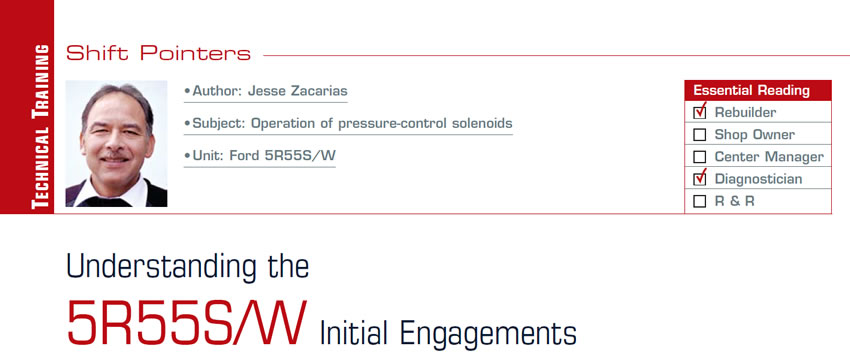Cranky: Diagnostics yields no solution to misfire
A 2003 Jeep Grand Cherokee 4.0L 4×4 comes into the shop for transmission repair. After installing a rebuilt transmission the vehicle exhibits a misfire. Upon inspection, I find the vehicle has stored a P0352 code for an ignition coil #2 primary circuit fault. So I perform the diagnostics related to this code and do not find any circuit problems.
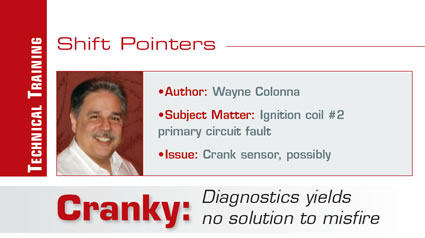
A Little Solder Does the Trick
A 2006 Mazda 3 with a 2.3L engine using a front-wheel-drive five-speed automatic transmission (FS5A-EL known as the FNR5 in Ford) comes into Bebes Transmitech shop in Puerto Rico. The A/T warning lamp is illuminated so codes were immediately checked. Only P0791 was stored in memory. It was logged and cleared before going on a road test where the code set immediately after take off.
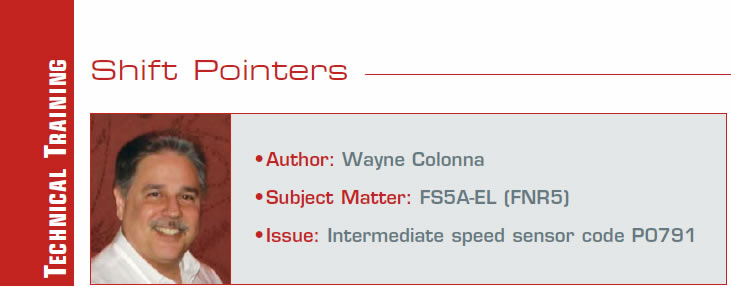
FNR5 TCC slip and/or shift solenoid E stuck off
The FNR5 transmission can be found in most Ford and Mazda front-wheel-drive vehicles and has been with us for a while. One of the most-common calls we get on this transmission in the tech center at Valve Body Pro is for a code P0741 TCC slip and/or P0771 shift solenoid E stuck off. Recently we had a 2008 Ford Fusion with this problem. Figure 1 shows the SSA (SSPCA) increasing the modulation but no drop in rpm slip.
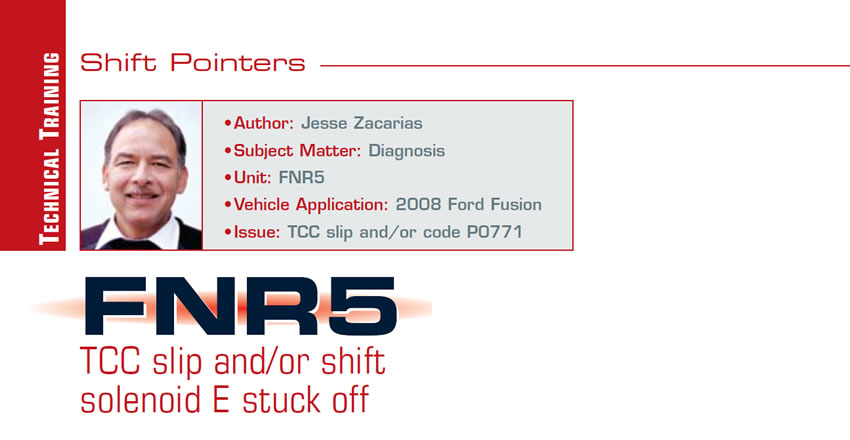
Replacement of Battery Causes TCM Damage
A 2003 Volkswagen Passat come into our shop with multiple codes and harsh engagements and was in failsafe mode. The customer said he parked the vehicle and when he started it the next day he noticed the problem. At times the TCM would fail to communicate with the scan tool. When we removed the carpet at the passenger-side floorboard to check the TCM for voltage, we noticed the whole bottom of the floor had about 2 inches of water.
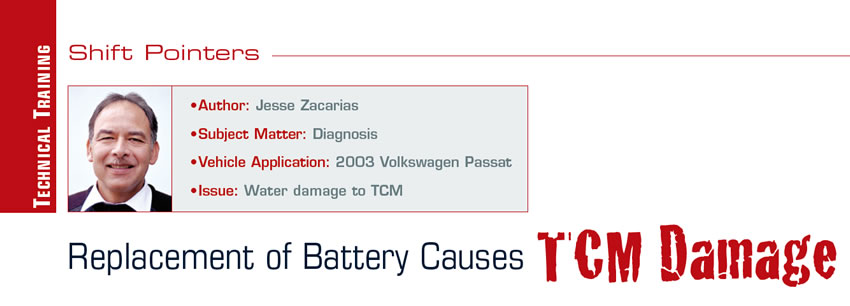
Testing the Speed Sensors in the AW55-50SN Transmission
A 2002 Volvo S60 arrived at our shop with two codes in the TCM: 0023 “Transmission input shaft speed sensor signal missing” and 0089 Transmission input speed sensor, signal too low.” The vehicle was in “limp-home mode,” which allows the transmission to be operated in 3rd and 4th gears only and with high line pressure. The customer had bought the vehicle with these conditions and did not know its history. Visual observation showed that someone had spliced into the speed sensors (Figure 1) and had replaced the transmission with a used one.
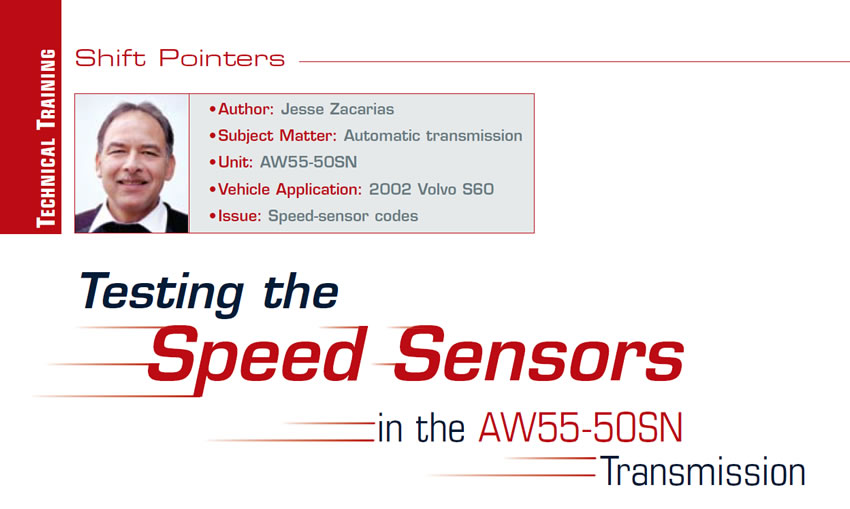
Adaptations Critical to Proper Shifts
In previous articles I have explained the important part that adaptations play in the shift quality and proper operation of a transmission. I have corrected many shift complaints from other shops that just could not get the transmission to shift properly simply by resetting the adaptations.
In this article I’ll use the VW 01M 2-3 shift to explain the hydraulic part of the adaptation. Let’s use the most-recent case I had, a ’99 VW New Beetle with a 01M transmission that had a slight binding feel on the 2-3 shift.

The Importance of Proper Testing
We can all agree that testing today’s transmissions can be more complicated then it was 20 years ago. We have to deal with more electronics and hydraulic design, not to mention programming of the transmission control module by the design engineers. Proper testing procedure and testing equipment become a necessity.
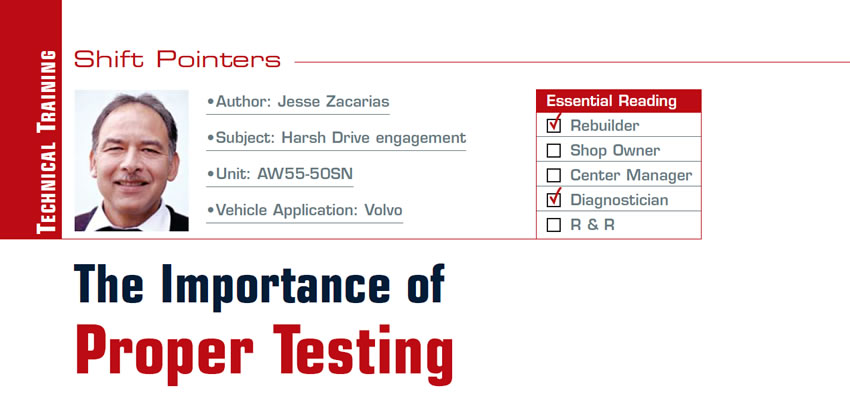
Are We Listening?
I heard a report recently on NPR (National Public Radio) that said, “Doctors are not good listeners; that is why a lot of unnecessary tests are done.”
When I heard that I said to myself, “That is true in our field too.” If we don’t listen well to the patient we may misdiagnose. Let me tell you about something that happened to me just recently that emphasizes this point. We had a customer sent to us by a local general-repair shop. He was a student here for the winter break visiting his family and was about to leave when he started to have transmission problems on his 1998 Mercedes M320.
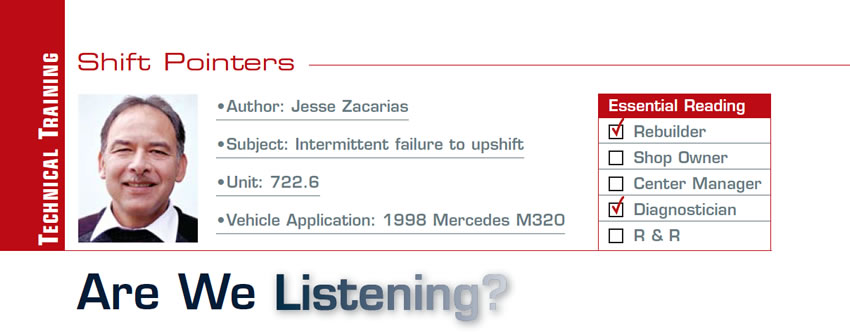
Going Nowhere Fast
Just recently my uncle backed out of his driveway with his 2003 Ford Taurus wagon (AX4N transmission), put it in drive and had no movement. He then put it in reverse and still had no movement. So there he was stuck in front of his house, going nowhere fast! And I must say that if you are going to experience a sudden no-move condition with your vehicle, there is no better place than in the front of your home. The vehicle was then taken to the good folks at R&J Transmission Service in Waldwick, N.J., where they did a great job taking care of my Uncle’s problem.

It’s Not in the Manual
A while back one of our members called the tech line about a 2002 Toyota Sequoia that required replacement of the valve body. After the valve body was installed the vehicle had no reverse, pulled forward in neutral but drove perfectly when the selector lever was in the overdrive position.
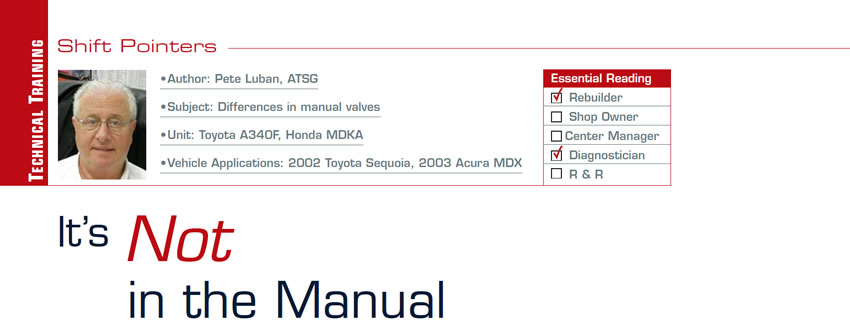
Dealing with Shift Adaptations
Shift adaptations are something we have to deal with in the transmission industry. More and more car manufacturers are making use of this function to keep their transmissions shifting like new as they wear. Part of the function of adaptation is to allow the transmission control module (TCM) to compensate for the gradual wear of clutches and bands and for internal hydraulic leaks resulting from use.
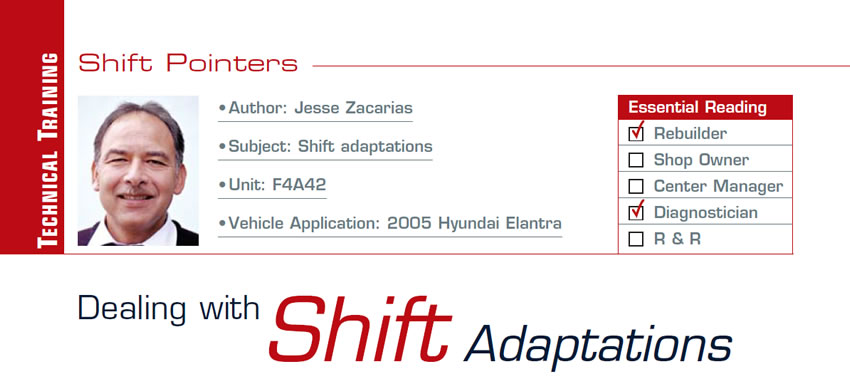
Understanding the 5R55S/W Initial Engagements
The 5R55S/W transmission has been with us for a little more than a decade. Its common complaints include harsh forward engagement; harsh reverse engagement; delayed, harsh initial engagements; flares on the 3-4 shift; and bind-up on shifts.
